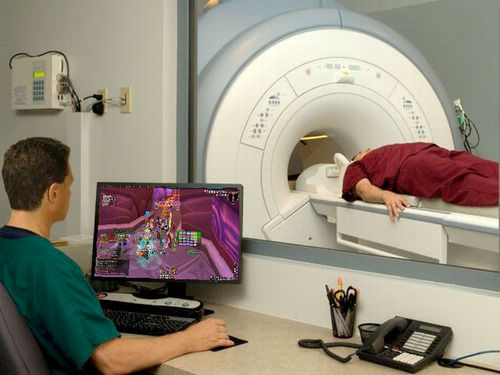Figures...
Figures...

More Posts from Scotlandknight-blog and Others



Steven Hawking has partnered with Yuri Milner to send “nano craft” the size of a postage stamp equipped with micro HD cameras and communication to our closest neighboring solar system. The tiny spacecraft will weigh just fractions of an ounce and will be capable of traveling at 20-25 percent of the speed of light. An array of lasers would propel the tiny vehicle up to 47,000 miles per second. At that speed, the craft could reach the closest star, Alpha Centauri, in about 20 years. Alpha Centauri is 4.4 light years (26 trillion miles) from Earth. The endeavor is ambitious, as this distance is 3,000 times farther than any man-made craft has flown.
Stephen Hawking has announced the project, dubbed “Breakthrough Starshot,” on his Facebook page on Tuesday this week.


Your regular commercial airliner, like a Boeing 747 is fast. A super-spy jet like the SR-71 Blackbird is much faster than that, traveling at over three times the speed of sound. So how does a deep-space probe like New Horizons, which recently flew past Pluto, compare? Thanks to this animation, you can see it’s very, very fast indeed!

Arp 159 and NGC 4725

Close-up of the Bubble Nebula
(via APOD; Image Credit: NASA, ESA, Hubble Legacy Archive; Processing & License: Judy Schmidt )
It’s the bubble versus the cloud. NGC 7635, the Bubble Nebula, is being pushed out by the stellar wind of massive central star BD+602522. Next door, though, lives a giant molecular cloud, visible to the right. At this place in space, an irresistible force meets an immovable object in an interesting way. The cloud is able to contain the expansion of the bubble gas, but gets blasted by the hot radiation from the bubble’s central star. The radiation heats up dense regions of the molecular cloud causing it to glow. The Bubble Nebula, featured here in scientifically mapped colors to bring up contrast, is about 10 light-years across and part of a much larger complex of stars and shells. The Bubble Nebula can be seen with a small telescope towards the constellation of the Queen of Aethiopia (Cassiopeia).





1969 photos of Neil Armstrong practicing for the moon landing. Or faking it.
via Paleofuture

Robert McCall

NGC 7635: The Bubble Nebula from NASA APOD, 22 April 2016

UFO Sighting 2007-July 3-United Kingdom
The picture was taken around sunset. Witness reports that his wife noticed a stationary, very reflective object behind the cloud and being completely flummoxed about it told him to get the camera. As he raised the camera and increased the zoom, the object suddenly started moving at an incredibly fast speed, witness stated “I just pressed the button several times”. We got several pics, but it only appeared in one, the first one. It was gone in an instant… The witness choose a UFO site on the internet by random to anonymously report the sighting.
-
 monkeypuking liked this · 1 month ago
monkeypuking liked this · 1 month ago -
 ragdollphysicist reblogged this · 1 month ago
ragdollphysicist reblogged this · 1 month ago -
 nijihub liked this · 1 month ago
nijihub liked this · 1 month ago -
 ragdollphysicist liked this · 1 month ago
ragdollphysicist liked this · 1 month ago -
 disgusted-alien reblogged this · 1 month ago
disgusted-alien reblogged this · 1 month ago -
 edsa29-blog liked this · 2 months ago
edsa29-blog liked this · 2 months ago -
 eagerlypolitepioneer liked this · 2 months ago
eagerlypolitepioneer liked this · 2 months ago -
 mammal-sh liked this · 2 months ago
mammal-sh liked this · 2 months ago -
 albinofetus reblogged this · 3 months ago
albinofetus reblogged this · 3 months ago -
 11092001pt2 reblogged this · 4 months ago
11092001pt2 reblogged this · 4 months ago -
 popstarfantasy reblogged this · 4 months ago
popstarfantasy reblogged this · 4 months ago -
 popstarfantasy liked this · 4 months ago
popstarfantasy liked this · 4 months ago -
 rodtap reblogged this · 4 months ago
rodtap reblogged this · 4 months ago -
 herovi liked this · 4 months ago
herovi liked this · 4 months ago -
 2024mazdacx5 reblogged this · 4 months ago
2024mazdacx5 reblogged this · 4 months ago -
 putostds liked this · 4 months ago
putostds liked this · 4 months ago -
 gusxxtavo liked this · 4 months ago
gusxxtavo liked this · 4 months ago -
 soulbleeds liked this · 4 months ago
soulbleeds liked this · 4 months ago -
 k4nekiken liked this · 4 months ago
k4nekiken liked this · 4 months ago -
 silverrrpatchouli liked this · 4 months ago
silverrrpatchouli liked this · 4 months ago -
 fuckyouharri reblogged this · 4 months ago
fuckyouharri reblogged this · 4 months ago -
 fuckyouharri liked this · 4 months ago
fuckyouharri liked this · 4 months ago -
 tilangels liked this · 5 months ago
tilangels liked this · 5 months ago -
 iratherb3amisterytoyou reblogged this · 5 months ago
iratherb3amisterytoyou reblogged this · 5 months ago -
 iratherb3amisterytoyou liked this · 5 months ago
iratherb3amisterytoyou liked this · 5 months ago -
 garota-bizarra-96 liked this · 5 months ago
garota-bizarra-96 liked this · 5 months ago -
 kaede-kazezawa liked this · 5 months ago
kaede-kazezawa liked this · 5 months ago -
 femmepathy liked this · 6 months ago
femmepathy liked this · 6 months ago -
 fish3d reblogged this · 6 months ago
fish3d reblogged this · 6 months ago -
 fish3d liked this · 6 months ago
fish3d liked this · 6 months ago -
 palimpalim96868 reblogged this · 6 months ago
palimpalim96868 reblogged this · 6 months ago -
 palimpalim96868 liked this · 6 months ago
palimpalim96868 liked this · 6 months ago -
 kanzgrosseskino reblogged this · 6 months ago
kanzgrosseskino reblogged this · 6 months ago -
 schiz0o0 liked this · 6 months ago
schiz0o0 liked this · 6 months ago -
 sikerlerr reblogged this · 6 months ago
sikerlerr reblogged this · 6 months ago -
 echoesinking reblogged this · 7 months ago
echoesinking reblogged this · 7 months ago -
 prideandprejudiceandknuckles liked this · 7 months ago
prideandprejudiceandknuckles liked this · 7 months ago -
 thatboysouth reblogged this · 7 months ago
thatboysouth reblogged this · 7 months ago -
 thatboysouth liked this · 7 months ago
thatboysouth liked this · 7 months ago -
 makaipunk reblogged this · 7 months ago
makaipunk reblogged this · 7 months ago -
 turochamp liked this · 7 months ago
turochamp liked this · 7 months ago -
 yarahi liked this · 8 months ago
yarahi liked this · 8 months ago -
 yacin666 liked this · 8 months ago
yacin666 liked this · 8 months ago -
 una-diva-virtual liked this · 8 months ago
una-diva-virtual liked this · 8 months ago